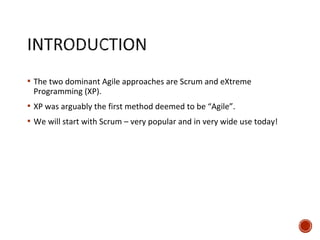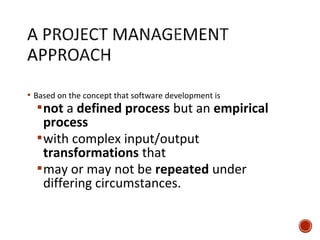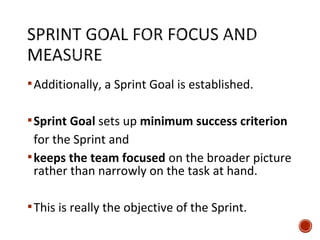The document discusses Scrum, an agile framework for managing product development. It describes key Scrum concepts like sprints, daily stand-ups, product and sprint backlogs, and roles like the Scrum Master and Product Owner. Scrum uses short development cycles called sprints to incrementally deliver working software. Teams self-organize during sprints to progress features on the product backlog.















![ Ancillary roles in Scrum teams: have no formal role and
infrequent involvement in the Scrum process—but
nonetheless, they must be taken into account.
Stakeholders
Are the customers, vendors.
Stakeholders: enable the project
Stakeholders are those for whom the project produces the
agreed-upon benefit[s] that justify its production.
Only directly involved in the process during sprint reviews.
Managers
People who control the environment.](https://image.slidesharecdn.com/agileprocesses-scrum-190611025103/85/Agile-processes-scrum-16-320.jpg)


























